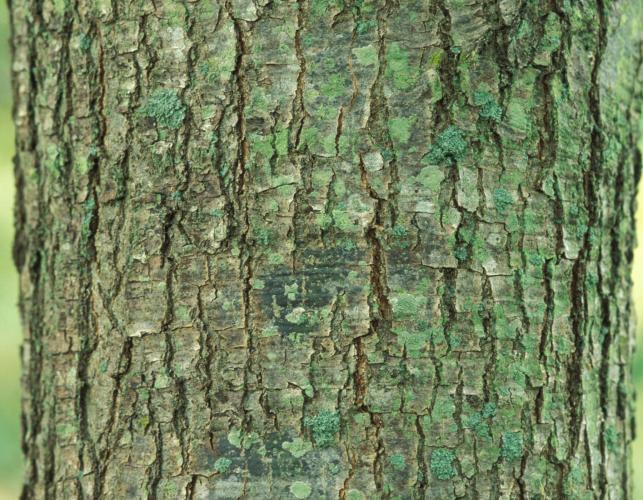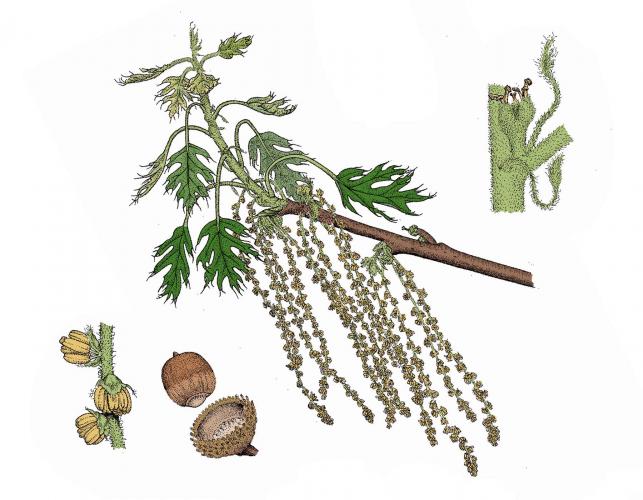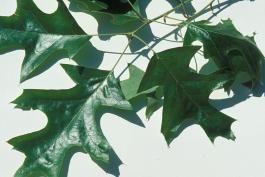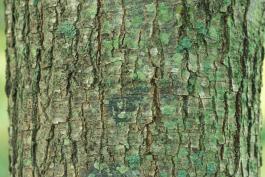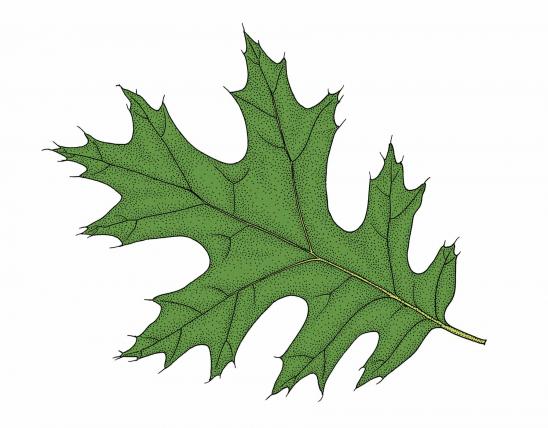
Cherrybark oak is a medium to large tree with a straight, branch-free trunk and an open, rounded crown.
Leaves are alternate, simple, 6–7 inches long; margin with 5–11 lobes; top of lobes at right angles to the central vein, fairly evenly spaced and uniform in size, bristle-tipped, notches between lobes shallow; shiny dark green above, pale and with whitish, yellowish or grayish hairiness below. Leaf stalks often flattened. Leaves often have a drooping appearance. Turn reddish-brown in fall.
Bark is gray to black with scaly, narrow ridges similar to the bark of black cherry.
Twigs are moderately stout, slightly grooved, dark red, smooth.
Flowers April–May, in catkins.
Fruits September–October, acorns single or in pairs; nut light brown, broadest at the base and rounded at the top, ½ inch wide and long, cup covering a third of the nut, shallow; scales reddish-brown with a dark border, flattened, hairy; seed bitter; ripen in autumn of second year.
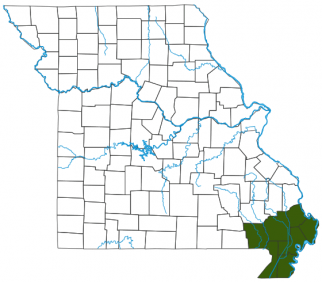
Habitat and Conservation
Status
Human Connections
Ecosystem Connections


